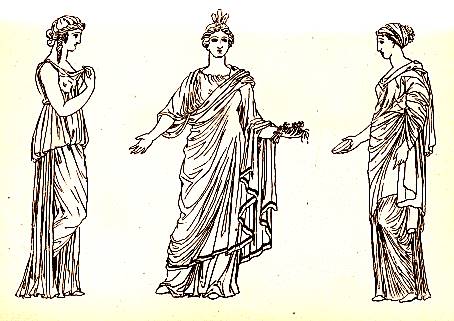Chiton - History and Facts about Chiton
Chiton is a type of sewn clothing worn by ancient Greeks from 750-30 BC. It was generally made from single rectangle of woolen or linen fabric. At the waist chiton was kept in place by a belt. There were two styles of chiton throughout the history, Doric or Dorian and Ionic.
Fabric was very expensive at that time and that is the reason why chiton was made from one piece. Doric chiton was made from pice of woolen fabric that was wide as outstretched hands of the wearer and higher than wearer. Fabric was folded in half vertically and upper part is folded to the outside until it comes to the shoulders. Fabric is then pinned, sewn or buttoned in the points that will lay on shoulders and girdle tied at the waistline. Long Doric chiton was worn by women while men wore chiton that came to the knees. Sleeved form was reserved for priests and actors. Ionic style chiton was made of a wider piece of linen or wool than Doric and was pinned, sewn or buttoned all the way from the neck to the wrists forming a sort of sleeves. A large belt called a zoster was also used for keeping the chiton in place. Linen was used as a material for Ionic chiton because it was much more flexible, and more pleasant for wearing.

Often a heavier himation was worn over chiton, which had the role of a cloak. Chiton that was worn without himation was called a monochiton. Chiton poderes was a chiton that reached the heels. There was an even longer chiton that dragged the ground and it was called chiton syrtos or an elkekhitōnes. Colors in which fabric for chiton was dyed depended on the class and wealth of the wearer but which color represented which class, changed in time.

